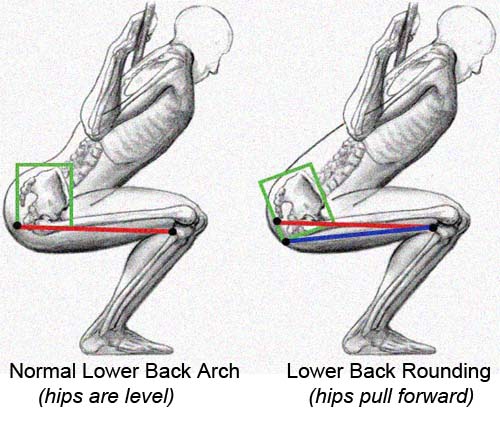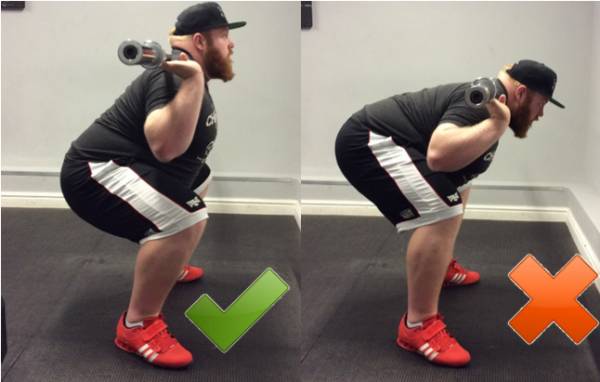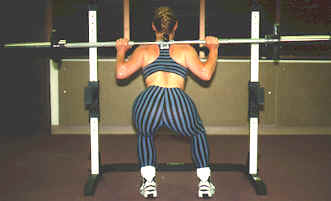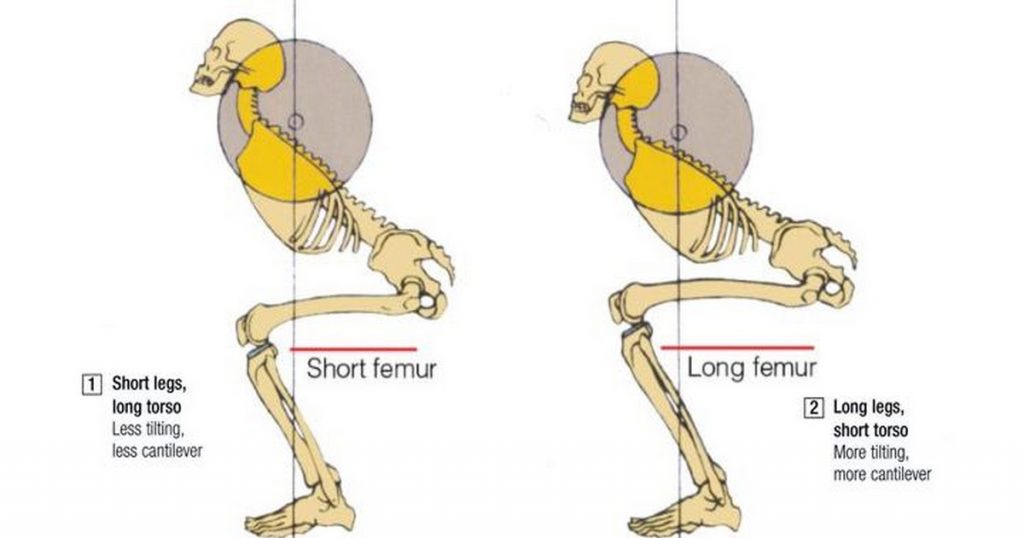Some Squat Stumbling Stones and Solutions for Successful Squat Supremacy
Admit it, the title alone made you click this link for the simple fact that NO ONE EVER has managed to make such an alliterative masterpiece relating to squats.
Alright, let’s get into those squats now.

Before digging into the specific issues, let’s classify where many of them will come from into the 3 most predominant categories:
- Balance
- Mobility
- Strength/motor control
You’ll see as we go through the list of the most common technique issues that they will invariably come back to one of these 3 elements, so understanding the effect of these considerations will help someone to overcome an issue as best as possible, or at the very least be able to work around it effectively enough to get a training benefit from the exercise.
- Butt Wink
I’ve written about butt wink in the squat A Lot, so I won’t go too deep into this point as there’s a big volume of my thoughts in that link, as well as all the previous ones included in it on the subject, but we’ll break down a few key points.

Essentially a butt wink is motion of the lumbar spine from neutral or extension into flexion at the bottom of a squat movement. This happens due to a limited involvement of pelvic flexion at this point of the range of motion, either due to anatomical limitations, an attempt to maintain balance and not fall over due to getting around femoral length considerations, and also the possibility of limited active control of the lumbopelvic complex in the bottom range of motion, which would make the back do the work of the butt to get into and out of the bottom of the squat.
Due to there being a lot of potential issues leading into this, there could be a couple of simple work arounds to figure out how to still train.
A. Don’t go so low – for most people, the use of the low back as a prime mover isn’t as beneficial as using the hip complex, and it could even wind up leading to injury in some. Therefore, if they’re not a competitive powerlifter worrying about getting white lights on the platform or an olympic lifter trying to get under a catch, the need to squat to the floor with a weight on your back may not be in the individuals best interest, so simply stopping the squat at the point where their low back starts moving would be an easy option.
B. Improving mobility – Many “fixes” for butt wink involve improving the ability to get the hips lower without involving lumbar flexion. This could come from improving ankle dorsiflexion to improve forward movement of the tibia and femur, which would allow for an easier balance position of the pelvis to drop lower into the movement; improving hip flexion range of motion to increase access during the movement; and even increasing bracing strength to prevent the lumbar spine from drifting into flexion. All worthwhile goals, but they may be limited in their ability to do much. If I have someone who has crazy long femurs relative to their total height, they’ll never have flexible enough ankles to drop it like it’s hot without being some circus contortionist, or falling over.
That being said, improving the above mentioned mobility considerations can definitely improve the squat depth before hitting any butt wink, so anything that can be done without causing much harm to improve these could be beneficial.
C. Change your stance – Opening your feet up a bit wider than shoulder width can often increase hip flexion range of motion in most people. Turning the toes out into some slight external rotation can also increase anatomical hip flexion ability, plus essentially “shorten” the femur’s moment arm relative to the base of support and make it easier to drop into a squat compared to standing with your feet closer together.
D. Active hip flexion control and bracing strength – Losing muscle tension at the bottom of the squat to increase depth seems counterproductive, and in many ways it is. The real benefits from doing this come down to looking cool on the internet, plus potentially using an elastic recoil effect to essentially bounce out of the hole, then regain stiffness through the torso and pelvis to control through the sticking point of the movement. This may not be the best strategy for novices or beginners compared to working on controlling bracing through the movement and stopping the depth at the point this controlled positioning is lost, but hey, Instagram.
Here, Omar Isuf outlines these concepts plus addressing active hip flexion control.
Sometimes people also just need to brace harder and work their butts off to keep their stuff together.
2. Hips Shoot Up First/Torso Lean out of the hole
Breaking this down, it’s often a squat that involves knee extension independent of hip extension out of the hole. Ideally both should be working together to extend so as to not tilt the torso forward significantly and make the movement into more of a back extension or good morning.
In my experience, this really isn’t a strength issue or mobility concern as much as it is a balance concern. Often, this movement will occur if the bar starts to drift ahead of the base of support. The hips shoot back to balance out the loading and to prevent the individual from falling forward, making it easier for them to pull the load back over their base of support to finish the movement if at all possible.

Image credit: https://breakingmuscle.co.uk/uk/fitness/3-reasons-you-don-t-squat-more-and-what-to-do-about-it
In the above pic, you can see in the good example the bar is propped vertically over the middle of the foot, whereas in the good morning example, the bar looks like it’s considerably forward of the foot.
Maintaining the bar positioning over the base of support is one of the major challenges with a squat, and one that can produce the greatest technical challenges. The reasons for this forward movement could be the exact same as the butt wink: ankle/hip mobility, exceeding depth control, lack of core stiffness, etc. It could also come down to loading more weight into the ball of the foot versus through the heel. There should be a relatively uniform weight distribution through the entire foot, with probably a bit more on the heel than the ball of the foot. When more weight is loaded through the ball, you wind up tipping the barbell forward and it makes it harder to balance.
Shift too much weight forward and you wind up falling forward. Shift too much back to your heel and you wind up lifting your toes and falling backwards. Get the bar right over the middle of your feet, and life is beautiful.
3. Knee Collapse

When the hips internally rotate to drive power out of the bottom of a squat or jump, it’s not a good way to develop vertical linear force and movement. The common blame for this has come down to the gluteus medius being weak, so we saw a generation of people doing endless number of side lying clams with 3 lb dumbbells on their knee to increase strength of the glute med.
The downside to this is that the glute med doesn’t do nearly as much as the glute max to resist this valgus collapse, and in fact during movements involving hip flexion it may actually contribute to internal rotation.
Often overlooked in this element is the relative contribution of the foot and ankle to knee valgus. Looking at the above examples, you can see there’s not a lot of strong and vertical alignment of the foot and ankle in those collapses, which will all lead to altered tibial positioning and feed into some wonky knee swings. In my experience, clients who have a history of flat feet and pronation during walking or running have a very high incidence of knee valgus during squat movements. Working on creating foot tension and controlled arch strength to prevent pronation has a significant effect on maintaining knee alignment and preventing valgus collapse.
A downside to this is to produce true ankle dorsiflexion can be fairly difficult in some, so they find “fake dorsiflexion” by pronating their feet and flexing through more of a medial direction than normal, which allows them to dig into a deeper squat position than if they were to try to dip it low without losing their arches.

The black line indicates true dorsiflexion, whereas the dotted orange line represents that false dorsiflexion coupled with pronation. When people hit that, they wind up turning their feet out and dropping onto the inside of their feet while also lifting the outside edge of their feet.

To improve this, working on the short foot positioning as mentioned in the video above can be very powerful, as can wearing solid sole shoes that prevent pronation, and working on controlling positioning into the bottom of the squat to prevent the rolling altogether would be the best places to start. From there, use a weight you can manage to control and not drive into that rotation.
4. Lateral Hip Motion

Ideally a squat should be straight down and straight up again, with as little lateral or anteroposterior movement as possible. When you start to see lateral movement like the picture above, there’s typically a couple things that may be happening.
A. one leg working harder than the other – in this pic, the person is putting all of her weight over the left leg, which would be working more than the right. This could be due to an injury to the right leg somewhere and hesitancy to make it work, or maybe she’s just really right leg dominant and likes using it for everything. Think of loading 60% of your weight on the right leg and 40% on the left to reduce this shift if possible and make the right leg work more than the left.
B. positional strength asymmetry – sometimes a person is stronger in a different position than where we put them. In this example, maybe the right hip is stronger in an externally rotated position, so to get there the hips laterally rotate to the left. If this is the case, turning the right foot out externally a few degrees would therefore limit the lateral motion of the hips and help this individual drop down and come straight back up with no or at least less lateral movement.
So there you have it, some of the most common squat issues and how to address them. Again, most come back to adequate mobility, control, and balance of the weight over the feet, so if you do anything, it will involve working within those 3 paradigms. Happy squatting!

